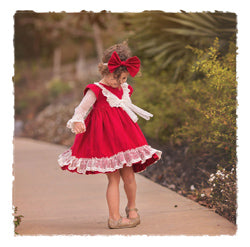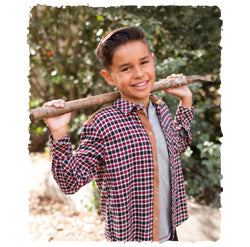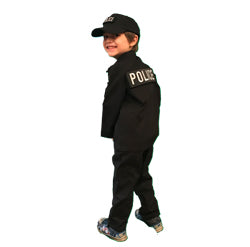Baby Laundry 101
Many new parents ask the same question, what is the best way to wash your baby’s clothes? Baby clothing requires frequent washing due to accidents, messy eating, and playing outdoors, which leads to stain and odors and shortening the life of the clothing. Here at Best Dressed Tot, we have come up with a basic guide for the best ways to get your baby’s garments really clean so that they will last, all while protecting your child’s sensitive skin.
Step 1- Clean your machines
Always make sure to start with a clean washing machine and dryer. It won’t do you any good if your baby’s clothes are washed in a dirty washing machine with residues or mildew. White vinegar and baking soda can be one of the best and most natural ways to clean your washing machine. Fill the washer using the highest load size, hottest water setting, and longest wash. Open the lid and as the washer tub fills, add a quart of white vinegar and next, add a cup of baking soda. Repeat as necessary whenever your washer needs a cleaning. For the dryer, start by removing everything from the top of your dryer and wiping down the machine. Now use a dry cloth to wipe the lint trap and around the vent and then use the hose attachment on the vacuum cleaner to further suck out any lingering lint that’s stuck around the lint-trap area.
Step 2- Choosing a detergent
Some detergents are harsh and have unnecessary additives which can irritate newborn skin. It is important to choose a mild detergent that is meant for babies clothing. Some soaps are less alkaline than detergents and they don’t clean stains as well. When treating a stain, use the mildest product to get the job done. Also, avoid fabric softeners that contain perfumes and dyes which can cause an allergic reaction. Keep an eye out for signs and contact your pediatrician if rashes appear. An extra rinse cycle helps to get any remaining detergent or soap out of the fabric. Some great child friendly detergents are Myer’s Baby Laundry Detergent, Country Sav, and Nellie’s All Natural Laundry Soda. You can also try these natural options. Baking Soda is an effective cleaner, deodorizer, and fabric softener. Mix it with water to form a paste, and use on stains to absorb odors. Or you can add to water when presoaking new clothes to eliminate residue. Borax is a water-soluble mineral with antiseptic, antibacterial, water-softening, and whitening properties. Makes mild soap more effective (add 1/2 cup to wash). It is also a good diaper presoak. Sodium Perborate is a natural alternative to chlorine bleach that’s made of borax and hydrogen peroxide. Add 3 tablespoons to wash water to fight stains. Washing Soda which is also known as sodium carbonate, a mineral with strong cleaning and degreasing properties. Add 2 tablespoons to laundry soap to make it more effective, or make it into a paste to remove greasy stains. White Vinegar is a naturally acidic pantry staple that cuts grease, softens water, and can lighten dingy and gray laundry. Add 1/4 cup to wash. You can make your own baby-friendly detergent by combining 1 cup of castile soap flakes, 1/2 cup washing soda, and 1/2 cup borax. Add 1 cup of the mixture to your washer and you’re ready to launder! Just keep in mind that it is not recommended that you use homemade detergent on flame retardant garments. The oils used to formulate castile soap can break down the flame retardant fibers. Be sure to rinse the clothes thoroughly. Make sure to keep these and all household products out of the reach of children.
Step 3- Read the care labels on the clothes
Before washing any garment for the first time, read the care label. Different fabrics might require special treatment for best washing, so check the tag on each article of baby clothing and note the recommended washing temperatures, drying procedures and detergents. Following these instructions will help your child’s clothing look newer for a longer period of time.
Step 4-Sorting the clothing
Make sure to divide all articles of clothing into smaller loads of dark colors, light colors and whites. Keep any flame-retardant clothing separate as washing with regular clothing can ruin the fire-resistant properties of the clothes. Make sure if you are washing cloth diapers, to wash them separately as well. This ensures that the clothes will be less likely to bleed the dyes on each other in the wash. It is recommended to wash all baby clothes before your baby wears them, whether they are hand-me-downs or not. Some new clothes have been treated with a finish to help them stay new-looking while at the store and some babies’ skin can be irritated by this, so washing before wearing is a good idea.
Step 5- Pre-treating stains
If the clothing has stains, it is best to pre-soak them in cool water. Sometimes water is enough to remove certain spots especially drool, breastmilk and formula. Make sure you get to stains while they are fresh before they set in. For tougher stains, you can use a soft bristled nylon brush and a small amount of detergent but be gentle as not to risk damaging the fabric. After trying to remove a stain, always check for remnants of it before drying clothing — if the mark remains, you’ll have to resort to something stronger. Just remember that babies’ skin is very sensitive; be sure to rinse the clothing thoroughly after treating the stains and skip the treatments altogether on clothes that will be rubbing right up against your baby’s skin, such as cloth diapers or undershirts.
Step 6-Set your machine
Once your laundry is sorted by color and washing instructions, fill the machine. Determine the temperature based on what you are washing. Wash cloth diapers in hot water to sanitize them. White and off-whites are best on a hot setting. Warm works great for dark clothing and cold is best for delicate articles of clothing. Cold water is best used in the rinse cycle. Make sure to measure the correct amount of detergent. Once started, the average cycle takes 30-45 minutes. During this time, more laundry can be sorted for the next load and others can be folded and put away.
Step 7- Rinse
The clothing should be rinsed again through a second rinse cycle. Even small amounts of soap on the baby’s clothing could irritate your child’s skin. Adding 1 Tbsp white vinegar to the cycle will help get rid of any residue.
Step 8- Drying
Read the label again to determine the best way to dry each article of clothing. Some tags may say to air or line dry. Certain pieces of clothing dry best without added heat. You might also choose to line dry your baby or toddler’s clothes to avoid shrinking in the dryer. Dryer sheets are not recommended because they contain chemicals and perfumes that can irritate children’s skin. Dryer balls are a great alternative to dryer sheets as they fluff up the laundry and reduce drying time.
Step 9- Put clean clothes away
Folding or hanging the clothes and putting them away promptly reduces wrinkles and keeps baby’s clothes clean and organized.
Follow all of these easy steps to help your baby and Toddler’s clothes last and look new for as long as possible. When it is time to retire an article of clothing from being worn or out-grown, consider donating it and don’t forget to visit www.bestdressedtot.com to find something new and adorable for your little one.










